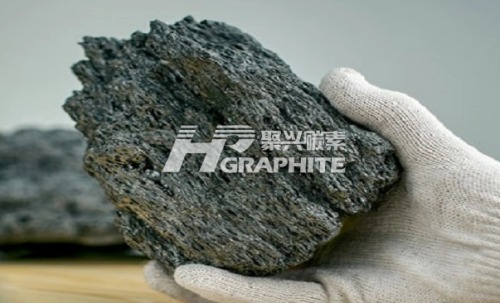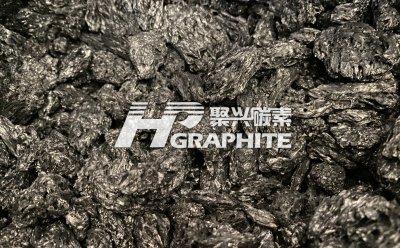【Needle Coke】 Three Production Processes Analysis

【Needle Coke】 Three Production Processes Analysis
Needle coke preparation involves the use of liquid-phase carbonization technology, where the coking raw materials gradually undergo thermal decomposition and condensation to form intermediate small spherical particles. These intermediate particles then undergo significant growth, merging, alignment, and finally solidify into a fibrous carbon product known as needle coke. Whether it is petroleum-based or coal-based needle coke, the production process consists of three main parts: raw material pretreatment, delayed coking, and calcination.
Raw Material Pretreatment
1. Coal-based Needle Coke Raw Material Pretreatment:
The pretreatment of coal-based needle coke raw materials primarily focuses on removing quinoline-insoluble (QI) substances from coal tar pitch, a process known as coal tar pitch purification. The composition of coal tar pitch has a certain influence on the formation of intermediate phase. Components such as active constituents, QI, metallic elements, heterocyclic compounds, nitrogen, oxygen, and sulfur play a role. Coal tar pitch mainly consists of aromatic hydrocarbons but contains a certain amount of QI, including amorphous carbon formed by the heat-induced polymerization of certain high molecular resinous substances during coal tar distillation, as well as coal and coke fines carried by the gas. These substances adhere to the intermediate phase, hindering the growth and merging of spherical crystals and preventing the formation of well-structured needle coke during coking. Therefore, pretreatment of coal tar pitch raw materials is necessary. The purpose of pretreatment is to remove the primary QI that hinders the growth of small spherical particles and adjust the composition to obtain suitable raw materials for needle coke production, which is an important condition for producing needle coke from coal tar pitch.
Methods for coal tar pitch purification include filtration, centrifugal separation, solvent methods (which can be divided into settling, centrifugation, filtration, flocculation, and extraction methods), and vacuum distillation.

2. Selection and Pretreatment of Petroleum-based Needle Coke Raw Materials:
The raw materials for petroleum-based needle coke are heavy oils from petroleum refineries, mainly composed of aliphatic hydrocarbons with a low content of aromatic hydrocarbons. Due to long-term storage underground and the use of various catalysts in the refining process, impurity elements are present in petroleum heavy oils, which are detrimental to needle coke production. Therefore, selection and treatment of needle coke raw materials are necessary. High-aromatic hydrocarbon content and low sulfur content heavy oils are selected as the primary raw materials, and impurities such as catalyst powders are removed. In addition, colloid and asphaltene generated during petroleum refining are also present in heavy oils, which are detrimental to needle coke production.
According to relevant information from the United States, the usual raw materials for producing coke (needle coke) are heavy oils such as residual oil from crude oil distillation, extracts of lubricating oils, extracts of hydrotreated lubricating oils, and residues or hydrodesulfurization products obtained from petroleum distillation or cracking. The best raw material is known as pyrolysis fuel oil or decant oil, which has a boiling point higher than cracked gasoline, i.e., residual heavy oil with a boiling point higher than 218°C. It is a raw material for thermal cracking liquid hydrocarbon, catalytic cracking heavy oil, thermal cracking tar, extracts of lubricating oils, and hydrodesulfurization products. Generally, these raw materials have low sulfur content, i.e., less than 1.5% (mass), preferably less than 0.8%. Mixtures of these raw materials can also be used.

Delayed Coking
Delayed coking is a process that combines continuous and intermittent operations to produce gas, various finished oils, and coke. The raw materials are heated in a heating furnace and then enter the coking drum (intermittent process) for vaporization and cracking during the heat preservation stage. Therefore, this process is a thermal cracking process for heavy oils. The resulting coke can be fuel-grade coke, sponge coke, granular coke, or needle coke.
The coking processes for petroleum-based needle coke and coal-based needle coke (delayed coking) are similar, with the main difference lying in the fractionation system and the different gases and liquid products obtained.
The delayed coking process for petroleum residual oil involves the use of a fractionator, a heater, and a coking drum. This process is continuous in the fractionator and the heater but intermittent in the coking drum. Therefore, two coking drums corresponding to one fractionator and one heater are necessary. Generally, the feedstock enters the bottom of the fractionator, where it is blended with recycle oil to stabilize the bottom temperature. The bottom material of the fractionator is then pumped into the coking furnace, rapidly heated to coking conditions, cracked and vaporized in less than 3 minutes, and then enters the coking drum.
In the coking drum, cracking, vaporization, and condensation occur until coke is formed. The liquid material is vaporized and returned to the top of the coking drum. Coke continues to form and accumulate in the drum until the desired quantity is reached, and then the process switches to the second drum for continuous operation. After feeding is stopped, the coking drum undergoes cooling treatment and is hydraulically cut with high-pressure water (17-23 MPa) before preparing for the next cycle. The coking cycle is typically 24 hours, but sometimes it is adjusted to 14-20 hours to increase processing capacity.
The cracked gas from the coking drum enters the fractionator, where different liquids, including gasoline, kerosene, diesel, and waxes, are separated. Some of these products are used for processing motor fuel or as chemical raw materials. The delayed coking process and equipment for needle coke are essentially the same as those for regular coke, with some necessary measures taken in individual equipment, coking conditions, and operations. These measures include controlling the feedstock heating rate, coking drum pressure, steam injection rate, and adjusting the recycle ratio to maintain a relatively stable state of the feedstock in the coking drum, fully utilizing the plastic flow of intermediate phase materials and the ordered arrangement of molecules, and creating conditions for the so-called "gas flow pulling coke" to ultimately form a streamline-shaped structure of needle coke. To ensure the stability of the needle coke production process, improvements are made to individual equipment. There are significant differences in process parameters, operating cycles, and coke yield between coal-based needle coke and petroleum-based needle coke, with coal-based needle coke having a much higher coke yield than petroleum-based needle coke.
Calcination
Needle coke produced from delayed coking contains high moisture and volatile components and is referred to as "green coke." It needs to undergo high-temperature calcination under oxygen-free conditions to be used as a raw material for high-power and ultra-high-power graphite electrodes. During the calcination process, the structure and elemental composition of needle coke undergo a series of changes, enhancing its physical and chemical properties.
Rotary kilns are typically used for needle coke calcination. The green coke enters one end of the kiln and comes into contact with the high-temperature exhaust gas. At the outlet end, there are gas or oil burners, and the calcination zone reaches temperatures as high as 1500°C. The rotation speed of the kiln significantly affects the residence time and heating rate of the coke inside the kiln. The size of the true density of needle coke after calcination is an important indicator for evaluating the effectiveness of the calcination process. Needle coke with a true density greater than 2.13 g/cm³ is considered to be of good quality. Follow us to stay informed about the trends in the carbon market.
No related results found








0 Replies